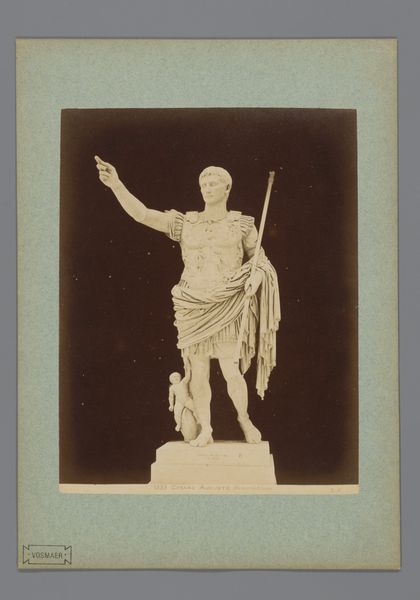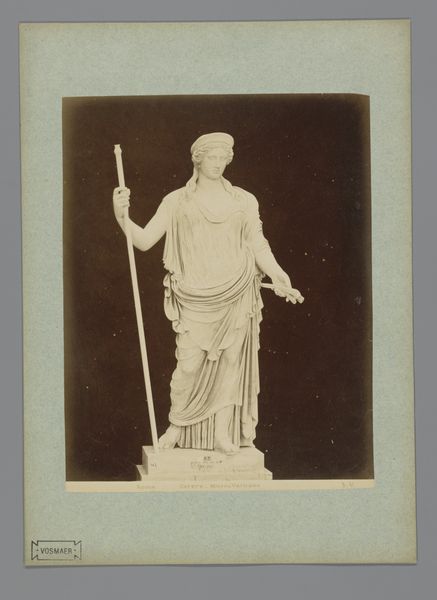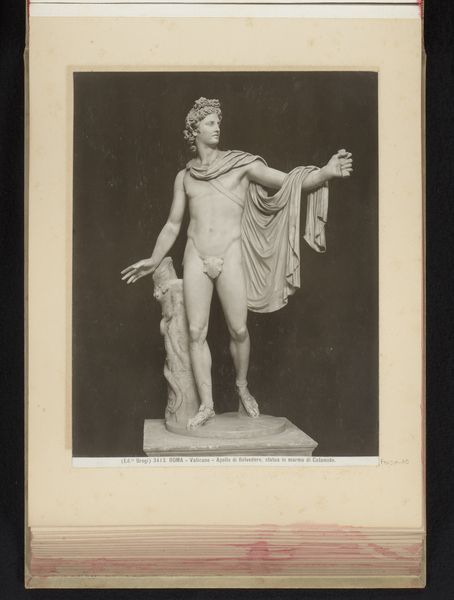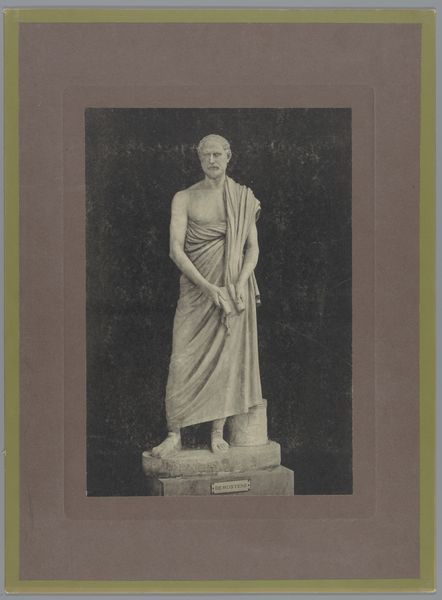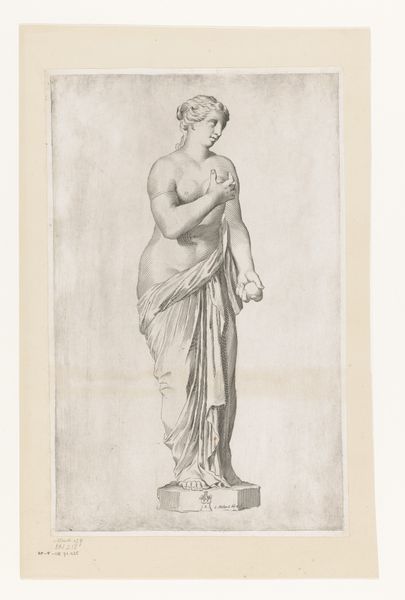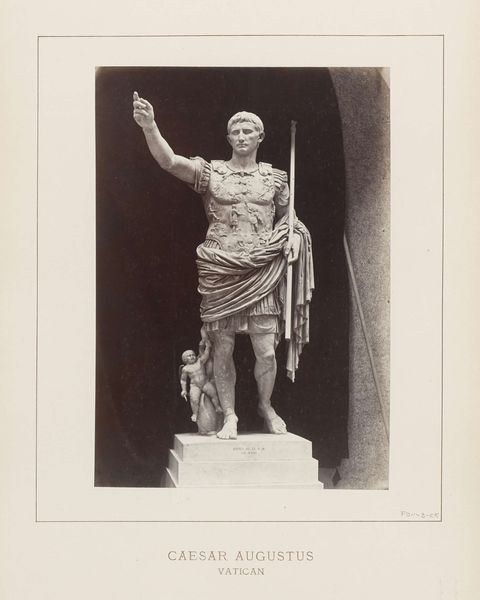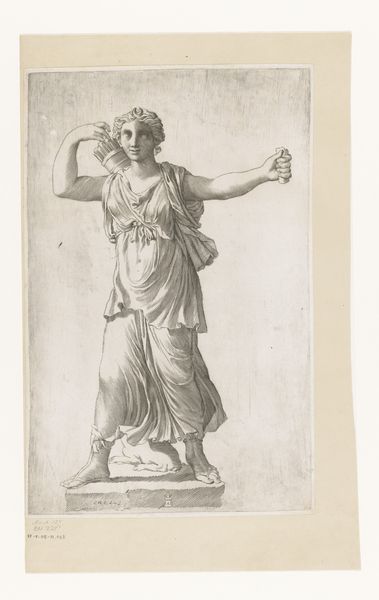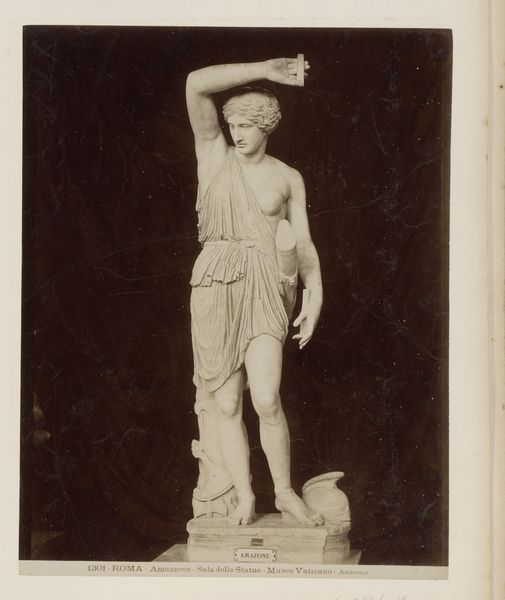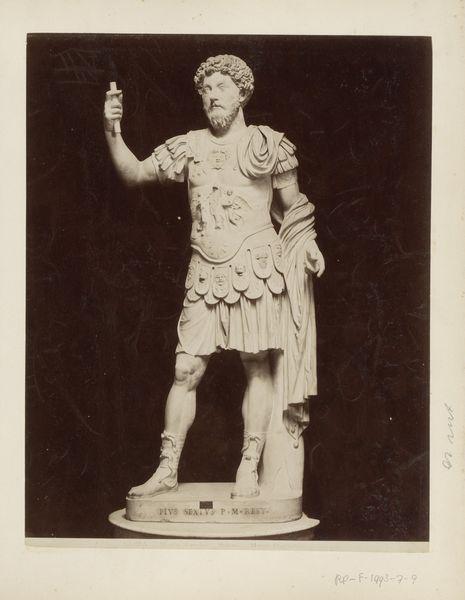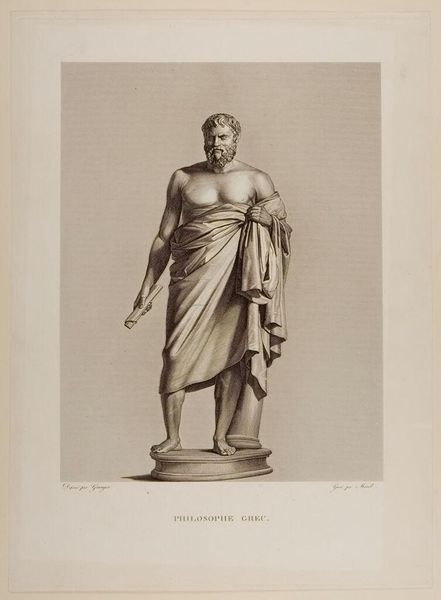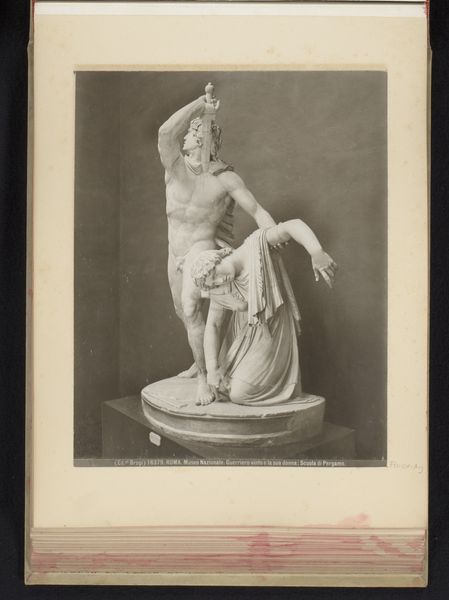
photography, sculpture, gelatin-silver-print
#
statue
#
photography
#
roman-art
#
classicism
#
sculpture
#
gelatin-silver-print
#
paper medium
#
statue
Dimensions: height 317 mm, width 240 mm
Copyright: Rijks Museum: Open Domain
Editor: So, this gelatin-silver print from around 1851-1900, preserved at the Rijksmuseum, is a photographic reproduction of a sculpture: "Statue of Claudius I as Jupiter." It strikes me as so deliberately… staged. There’s a theatrical quality to it. What do you see in this piece that I might be missing? Curator: Theatrically staged… I love that observation! For me, this isn't just a photograph of a statue; it’s a conversation about power, representation, and memory. Claudius, immortalized as Jupiter, ruler of the gods… and then photographed, re-contextualized again by… time. Look at how the photographer has played with light, almost reverentially. Can you see the delicate shadows dancing across his toga? They give this… cold marble a kind of… vital, temporary warmth. Editor: I see what you mean! Almost breathing… given the right light. But wasn’t Claudius I supposed to be a kind of… awkward emperor? A surprise ruler, due to Caligula’s assassination? It feels ironic that he's depicted in such a classically powerful and godlike way. Curator: Exactly! Irony might be the key to unlocking it. The Romans often idealized their rulers, even those with… shall we say, less-than-divine qualities. And then someone, much later, thought that staging and capturing this irony again would add a layer to it. Isn’t it glorious? How does this change your initial response? Editor: It does add so many layers. From awkward ruler to idealized statue, to photographic reproduction – it’s like power and image are constantly being renegotiated, reshaped…It is indeed very glorious to observe. I didn’t expect so much contemplation from one photo. Curator: And isn’t that the magic of art? It holds a mirror up to history and whispers secrets if we’re willing to listen closely enough.
Comments
No comments
Be the first to comment and join the conversation on the ultimate creative platform.
